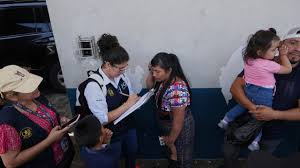
Alaska’s working-age population continued its long-term decline in 2023 as more people continue to leave the state than move here, according to annual data released this month by the Alaska Department of Labor and Workforce Development.
The shortage of working-age residents, those between the ages of 18 and 64, is holding back economic growth, economists and business leaders say.
And while Alaska’s overall population has stabilized, residents are continuing to grow older while the birth rate is falling, adding to long-term concerns to about the workforce, they say.
David Howell, the state demographer, said the U.S. economy’s healthy labor market is a key factor in the net migration losses and the worker shortage.
Historically, more people moved to Alaska from the Lower 48 than they do now, as they sought better job opportunities.
But that hasn’t been the case for many years, he said.
“It’s a job-seekers market,” he said of the national economy. “You can get a job without having to move across state lines. And Alaska is a huge move for people.”
The state has now experienced 11 straight years of net population outflows, data shows.
That’s much longer than the previous record of four straight years. That happened in the mid-1980s, and again in the mid-1990s.
[Earlier: Alaska’s working-age population has declined since 2013 peak, and recovery appears dim]
The outmigration has slowed the past few years. But 3,246 more people moved away from Alaska last year, compared to those moving here.
“It’s not that everyone all of a sudden is leaving,” Howell said. “It’s that they’re not coming,”
Movers are often typically people in their 20s and 30s. Fewer of those people moving to Alaska and starting families has helped contribute to a declining birth rate for the last decade, he said.
The trends have led to a declining youth population and school enrollments. It’s helped boost the average Alaskan age to 36.5 years old, about a decade older than in 1980, but still a bit younger the average American, the data shows.
The state’s migration losses were offset in part by fewer deaths than the year before. Alaska’s overall population grew slightly to 736,812, up by 300 residents or .04%.
The number of working-age Alaskans fell by .2% last year, to about 450,000, the agency said.
The number peaked at around 480,000 in 2013.
The growing shortage of working-age residents means there are two job openings for every unemployed person looking for work in the state, the state’s Labor department said in its Alaska Economic Trends report this month.
That creates challenges for businesses as they look for employees, Howell said. Employers are needing to pay more to retain and attract workers, including from outside the state, he said.
About 20% of jobs in Alaska are filled by nonresidents historically, often working in seafood processing, tourism, or mining and oil, the Trends report says. A small number typically stay, but these days, fewer are moving here and they’re not staying as long as they used to.
One factor are the declining wages paid in Alaska, the report says.
“With high job openings across the nation, Alaska has less draw for workers, temporary or permanent,” the Trends report said. “Alaska’s high wages have given us an edge in the past, but our wage advantage over the rest of the country has narrowed over the last few decades.”
The worker shortage could hold back potential statewide job growth this year, the Trends report says.







